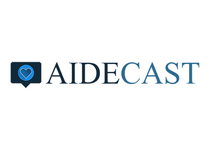
Digital care planning is an excellent resource for home care professionals, managers and care coordinators to plan, monitor and manage the exact care a service user requires, whether domiciliary, specialist or visiting care support. The technology enables quick and easy changes to care provisions to cater to personal preferences, well-being and wishes.
Using a care planning app is best practice, where home care agencies can manage admin, scheduling and rostering in one place while producing detailed reports drawing on logs submitted by carers during each visit in real-time.
CareLineLive, a specialist care management software provider developing advanced care planning applications specifically designed to meet the challenges of the modern home care environment, explains the advantages and why a care planning app is a necessity rather than an option.
Care Planning Applications Explained
As every home care professional will know, the care plan is the foundation of the services they provide, detailing care packages the agency has offered and agreed upon, and what a care team or individual carer will do during each visit.
Conventionally, care plans were produced manually and often kept either at the home care agency's office or at the service user's property, where a carer would review the plan, tick off tasks completed on a checklist, record observations or read notes and updates from their colleagues.
There are several considerable issues with this system, including those of manual errors. Examples might include a carer forgetting to read the plan, illegible handwriting, missed checklists to confirm medication has been administered or delays between communications meaning a physical hard copy care plan is not updated quickly. The challenge of having a continually updated care plan that is consistent with the office and carer/client home copy can also mean significant additional journeys for a carer driving first to the office to pick up the latest version.
Care planning apps use familiar formatting yet transfer all of the crucially important data within a patient’s care plan into a digital record. Any carer can access the care plan from their remote device, read new or revised care plans, and create notes that are immediately accessible across the home care agency.
Advantages of Digital Care Planning Software for Home Care Agencies
Running a home care agency and complying with high-quality standards is complex, with a need to juggle diverse workforces delivering varied care services, often across broad geographical regions. A coordinator might manage nursing carers, live-in care staff, visiting care teams and domiciliary care providers, many of whom may work entirely remotely without reporting to the office during a shift.
The English Care Quality Commission (CQC) has confirmed it supports the use of care planning software and considers this a factor when deciding whether to award Outstanding status during a care service inspection.
Next, we'll run through some of the most compelling benefits from the perspective of the carer, the families they support, and their management colleagues.
Reducing and Removing the Potential for Manual Error
Handwritten records and documents are unreliable, with the possibility of poor handwriting, abbreviations that are misunderstood or spelling errors, a particularly serious mistake when recording medication dosages or medications administered.
For a carer, having to write out explanations, observations and tasks completed is time-consuming, meaning they can visit fewer clients in a shift or cannot leave promptly when travelling between care appointments due to the need to write their entries into the client’s care plan.
A digital plan is clear, reliable, and will immediately highlight a typo, ensuring managers can rely on the information reported and care recipients have confidence their carers are always working with the most up-to-date information.
Version control ensures that a care plan is updated across all touchpoints but that care supervisors can access previous versions if they need to cross-check the data or refer back to prior agreements or care planning. This may be necessary to inform their quality control processes or generate up-to-date reports for family members or other healthcare services. This is also important in compliance and auditing.
Improving Data Security and Confidentiality Standards
A manual care plan can become lost, misplaced or damaged, making it extremely difficult for a subsequent visiting carer to complete their role to the appropriate quality standards.
App-based care planning is automatically backed-up to prevent data loss, ensuring client’s records are safe, secure and confidential, in compliance with data protection regulations and keep sensitive information restricted only to authorised users.
Faster Care Logging and Consistent Formatting
Digital care plans are user-friendly and easy for experienced carers to use; they follow well-known formats and logical sequences, refreshing screens or tabs within the patient's record as necessary. A template is ideal for standardising approaches across all home care delivery and means that coordinators and care managers can create new care plans for onboarding clients without delay.
While there are various layouts used in care planning, using features such as tick boxes or drop-down menus, copy and paste functions and the option to carry forward from one care plan to an updated version minimise administrative time while supporting high levels of accuracy.
Controlling Home Care Costs Through Digitisation
Home care agencies commonly juggle time and resource constraints, looking for ways to maintain or increase capacity to meet the needs of their local communities while being conscious of carer workloads and the allocated slots available within any one care shift.
Transitioning away from physical documents, and written care plans can effectively lower admin costs, eliminating the need to purchase large volumes of paper and folders and without any storage requirements. This also reduces admin time spent first filing and then retrieving documentation.
Users can print a copy of a care plan if they wish, perhaps to share and discuss with a family member, but otherwise need no further resources to implement ongoing care plan updates.
If a care coordinator needs to find a patient record, check a piece of information, or raise invoicing documentation, they can access this easily within their care planning dashboard. This allows opportunities to provide faster responses to queries and the potential for automated billing systems. Ultimately, using technology to replace manual tasks represents more reliable and efficient care planning across the board.
Read more about CareLineLive - CareLineLive Outlines The Need For Home Care Agencies To Urgently Implement Technology
About CareLineLive
CareLineLive is an award winning UK care management software system that delivers complete functionality for home care businesses. Set up in 2014, CareLineLive has used the latest technology to develop for agency owners and managers an innovative, easy to use, cloud based home care management system that is truly fit for purpose.
****
Source Company: https://carelinelive.com/







